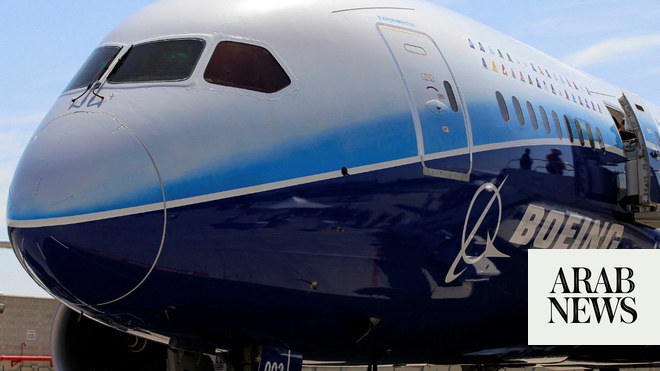
While Boeing maintains that around 99 percent of the gaps conform to the .005 inch standard, a small percentage exceeds it
NEW YORK: Boeing defended its safety practices Monday, touting aircraft testing protocols as it girds for a tough congressional hearing featuring critics of the embattled aviation giant.
“Boeing is confident in the safety and durability of the 787 and 777,” the company said in a powerpoint presentation accompanying a media briefing with two senior engineers, who summarized exhaustive testing procedures to refute whistleblower allegations that some 1,400 Boeing planes suffer from significant safety issues.
Wednesday’s Senate hearing is scheduled to include testimony from Boeing engineer Sam Salehpour, who went public last week with sweeping charges alleging Boeing’s safety practices are deficient and that the company retaliated against him for speaking out.
The hearing, titled Examining Boeing’s Broken Safety Culture: Firsthand Accounts, comes as regulators and politicians escalate scrutiny of Boeing in the wake of a near-disastrous January 5 Alaska Airlines flight on a 737 MAX that made an emergency landing after a panel of the fuselage blew out in mid-flight.
Salehpour’s charges include allegations that the 787 Dreamliner contains gaps between parts well above company standards, a dynamic that could “ultimately cause a premature fatigue failure without any warning,” creating unsafe conditions “with potentially catastrophic accidents,” according to an official complaint to the Federal Aviation Administration released by Salehpour’s attorneys.
Steve Chisholm, chief engineer for Boeing Mechanical and Structural Engineering, told reporters gathered at a Charleston, South Carolina factory and on a webcast, that “there was zero fatigue” found in testing.
“We were not surprised by the lack of fatigue findings,” said Chisholm, who noted that the composite materials behind the 787 were picked because they do not fatigue or corrode like traditional metals.
Described by his attorneys as a veteran quality engineer at Boeing, Salehpour slammed Boeing for a series of “shortcuts” that have “allowed potentially defective parts and installations in 787 fleets,” according to the FAA complaint.
To compensate for gaps between parts beyond the .005 inch standard set by Boeing, Salehpour said Boeing has employed force during assembly of 165 times the recommended level of 10 pounds.
After Salehpour’s complaint last week, Boeing released a lengthy rebuttal insisting it is “fully confident” in the aircraft and noting that regulators with the FAA signed off on Boeing’s processes when the company addressed the gap issue in 2022.
Company engineers pointed to testing for plane fatigue undertaken between 2010 and 2015 involving 165,000 cycles, or simulations of 165,000 flights.
In this process, a 787 was placed in a test rig and subjected to pressurization meant for a time period more than three times as long as the aircraft’s expected 787 lifespan of 44,000 cycles.
Company employees raised concerns about gaps and other aspects of the 787 in the 2020-2022 time period.
With 787 deliveries suspended during large stretches of this span, the company removed thousands of fasteners on some 120 planes in inventory and conducted rework on eight planes, company officials said.
While Boeing maintains that around 99 percent of the gaps conform to the .005 inch standard, a small percentage exceeds it.
However, testing has shown no sign of fatigue, said Chisholm, who also described the elevated force during manufacturing as a non-issue.
“We’re talking about 150 pounds on structure that’s meant to carry many thousands of pounds of load. This is not a large load,” Chisholm said. “It’s acceptable.”












